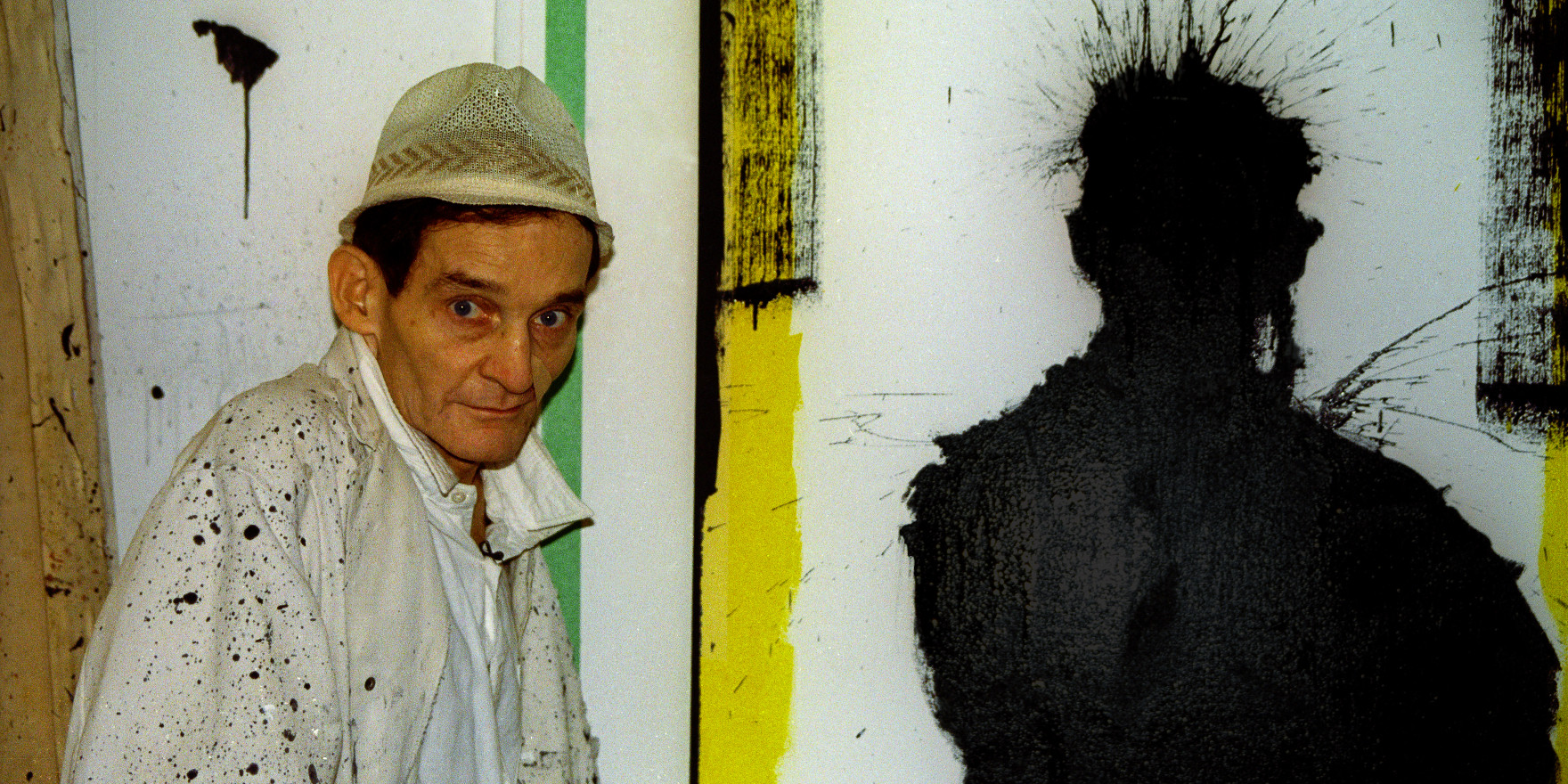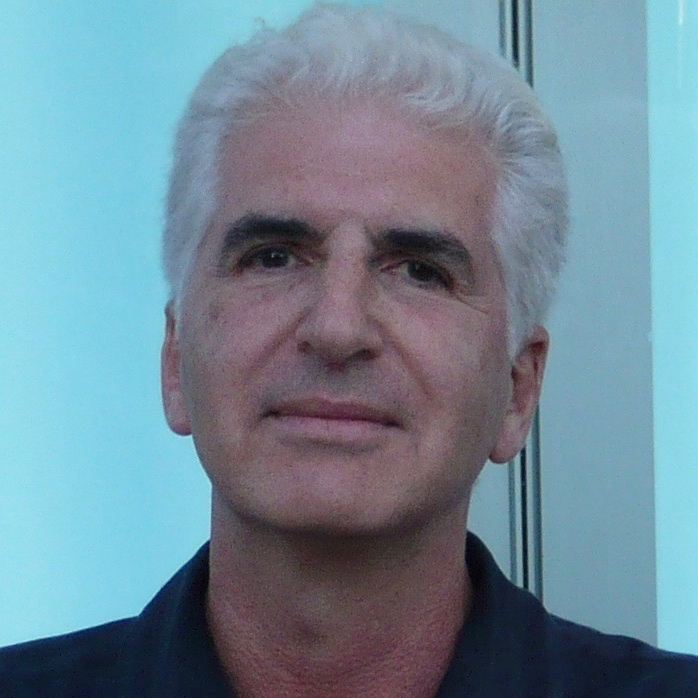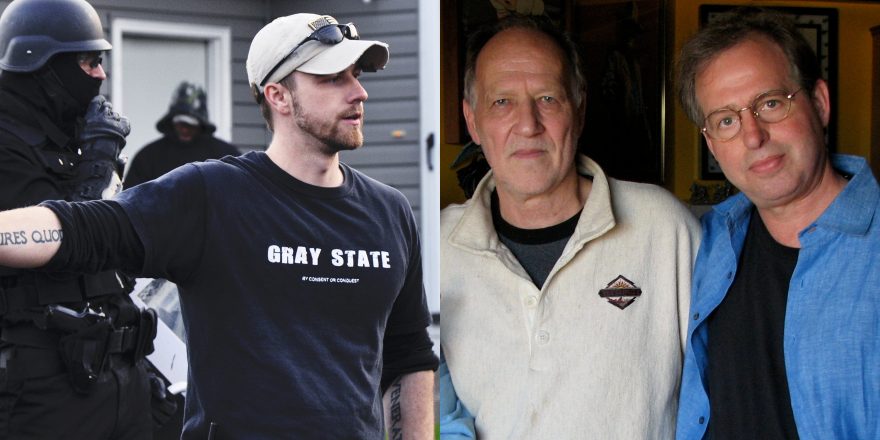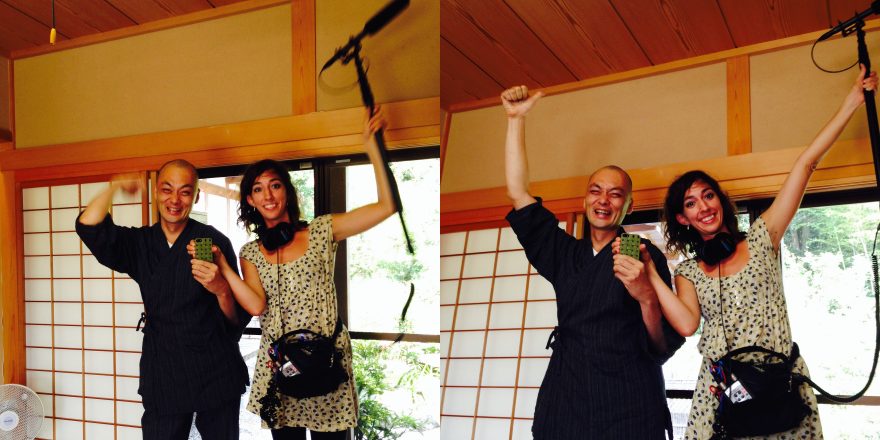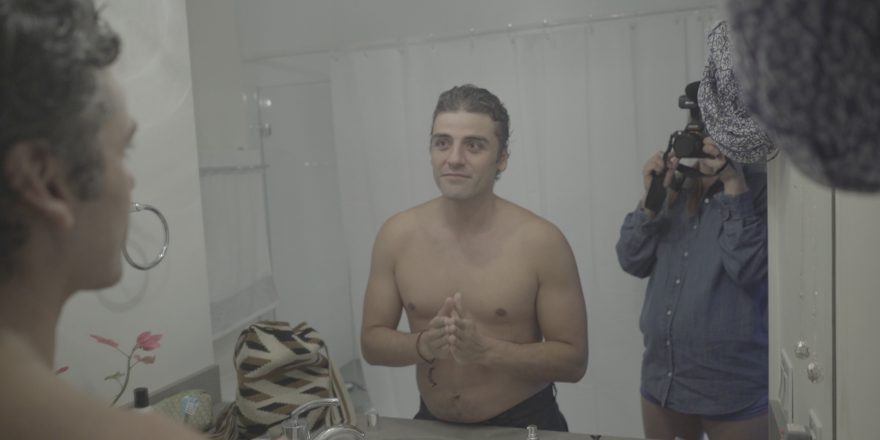We are only successful … when we are filming somebody who is more concerned with what he is doing than with the fact that we are filming him. … My obsession is the feeling of being there. Not of finding out this and analyzing that or performing some virtuous social act, or something. Just what’s it like to be there.
— Richard Leacock
One of my first mentors was Richard Leacock, a pioneer of the cinéma vérité movement. He was so charming that I thought, “Aha! The secret of documentary filmmaking is to get your subjects to like you.” After watching Ricky work, I began to realize that it was a lot more important to get them to ignore you. If I hadn’t learned this lesson, I would never have been able to make Shadowman, a documentary portrait of the brilliant and troubled artist Richard Hambleton.
Leacock would tell the legions of young filmmakers who came under his influence that you shouldn’t do anything to interfere with the story or alter the course of events happening in front of your camera.
When I would run into Ricky over the years, I noticed that his cameras got smaller and smaller until you hardly noticed they were even cameras. He believed that the high resolution or so-called “quality” of the picture promised by more expensive cameras was less important than the loss of inhibition, which will inevitably come to your subjects if they aren’t being reminded every second – by a huge camera or a crew of technicians – that they’re being filmed.
Fairly early in my career, I was directing a film about Sam Shepard, the American playwright and actor, during an off-Broadway season devoted to a retrospective of his plays. It was my first time working with Bob Richman, already highly regarded as a cinéma vérité cameraman. Still, it was a shock when we started shooting a rehearsal on our first day and Bob kept filming our main character from behind or the side, always at a distance, and mostly pointing his lens at the other people in the scene.
After a few minutes of this, I started first to whisper and then physically to try and nudge him around to the front, so we could at least see both eyes of the man our film was about. “Trust me,” Bob said, “he doesn’t want me there.” It was as if he had some special cameraman radar and was picking up a vibe that there was this invisible line that should not be crossed. (Bob told me recently that Shepard was the hardest and “most private” subject he’s ever dealt with in all his years shooting documentaries.)
But we respected that line and slowly, over the months that followed, we gained Shepard’s trust (or at least resigned acceptance – or maybe he just forgot we were there!) and Bob was able to move around and film him from the front. Then, one day, after repeatedly putting off our request for a one-on-one on-camera interview, Shepard turned to me and said something like, “OK, let’s go do this.”
We found a corner near a window so we wouldn’t have to take time to put up lights or spoil the mood and filmed an almost two-hour conversation. Shepard went into a deeply personal exploration of his life and career, something he never did again on camera, and something that would never have happened if Bob had barged in front of him on our first day.
Years later, my friend Hank O’Neal, the photographer, introduced me to Richard Hambleton and I started working on the film that became Shadowman. I realized very quickly that, much like Shepard, Richard had two strangely contradictory sides to his personality. He could be charismatic, witty, and outgoing. But he could suddenly flip and become shy, antisocial and even paranoid. Richard was also a heroin addict, which obviously affected his behavior on and off camera.
I had no backing when I started the film. I just decided Hambleton was a compelling character and I loved his paintings and street murals. (In my early twenties, I had seen his haunting Shadowmen lurking at night on the walls of downtown New York City.) Despite having no funding, I just began filming him on my own. Thinking back to Ricky Leacock, I brought the smallest, most inconspicuous camera I could find.
The first few visits went fairly well. I kept a low profile, which was easy because I’d come to his studio with a pair of art dealers who were themselves larger-than-life characters. They knew Richard had been an art star in the 1980s and were courting him in the hopes of reviving a career that had stalled for the 25 years in which he’d gone without a major show. I just tried to stay out of the way. Richard was paying attention to them and appeared to forget about me and my camera.
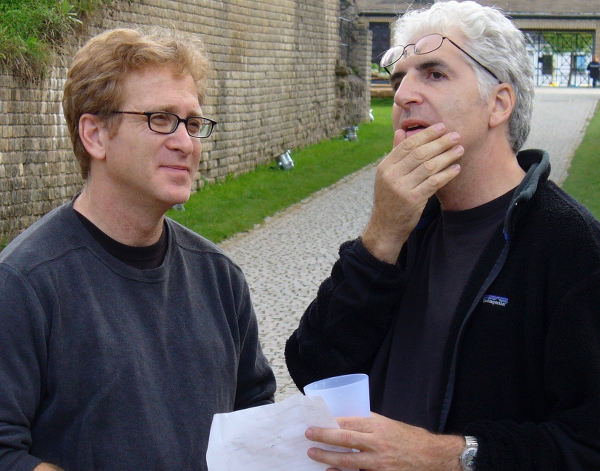
After a couple of these early shoots, I decided that I had to get a better handle on Richard’s backstory and would need to start asking him some questions. This meant I’d have to hire a cameraman. Luckily, Bob Richman was available. As soon as we started rolling, I realized that Bob was filming Richard from behind, and at least six feet away, only slowly working his way closer, and then slowly, slowly, sneaking around to get a shot from the front. I got impatient, but I waited, understanding that we had to let the process run its course. Fortunately, it worked, and within a few hours Richard was sitting on the sofa facing the camera and comfortably answering questions about his past.
In the weeks that followed, I found myself going back to his studio over and over, always with my cheap little camera. I started to feel like I was invisible. He paid practically no attention to me or the soundman who sometimes joined me, and he hardly seemed to notice that the camera was there. He was too busy fighting with the art dealers who were now clamoring for new canvases to show.
After many of these visits, Richard began to let me film him while he was painting. I was mesmerized watching him work. No matter how recklessly he slashed at the canvas, the paint always seemed to land in the right place. Once he pointed to the leg of a horse in one of his Rodeo paintings. “See,” he said. “It’s good because it’s fucked-up. I don’t want it to look too perfect.” I stepped back, and it had the feel of a real pounding hoof.
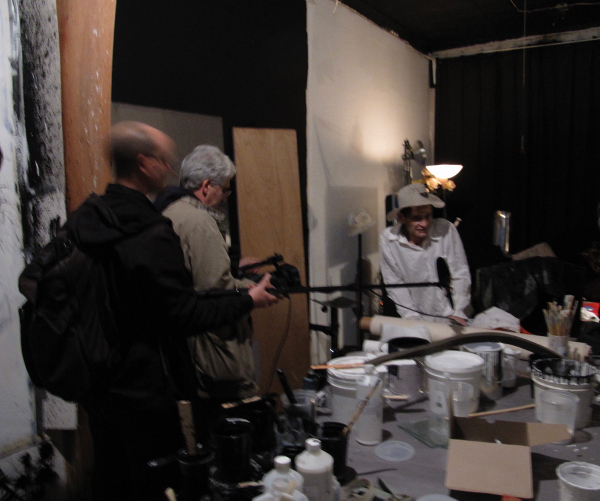
As his comeback gathered steam and reached a climax with a big retrospective at the Phillips Gallery in New York City, the pressure to produce more work intensified. Richard gradually retreated into his shell until, finally, he cut off almost all contact with the outside world. I wasn’t able to get into his studio or see him for months and months. I gave up on the idea of making the film.
A year or so went by. I would try once in a while to call Richard. I never got through and was unable to find out much from others about what he was up to or the state of his health. Then, out of the blue, I got a call one morning with word that he’d been evicted the night before for not paying his rent and that his belongings, including many of the paintings he had been hoarding, were being thrown into a dumpster in front of his studio on Orchard Street.
By the time we got there, the dumpster was gone and there was no sign of Richard. In the days that followed, we tried to trace the container through the Sanitation Department, but it was impossible. I imagined a cache of Richard’s paintings buried underground in a landfill somewhere on Staten Island.
Six months after his eviction, I got another call from a gallery owner in the neighborhood who had a long relationship with Richard. She told me, incredibly, that though city marshals had padlocked the front door of the two-story building that housed his studio, Richard knew of an old entrance on a back alley and had been sneaking in there for weeks. Now he had a secret lair where he could keep painting – without paying any rent!
So I started calling Richard’s cell phone, and called and called, until finally he agreed to let me come see him. He told me to get there at 10 a.m. I arrived and knocked on the secret back entrance. Richard opened the door a crack, saw me and growled, “Come back in an hour.” I soon found out why. As I watched from across the street, a young man arrived on a bicycle, carrying a small brown paper bag. He looked around, knocked on Richard’s door, and disappeared inside. Thirty or forty minutes later he emerged again, without the bag, hopped on his bike and disappeared. I waited a while longer, crossed the street, and knocked again. The door swung open and Richard ushered us in.
Inside, it was like a squatter’s black hole. Richard wasn’t just using this small room to paint – he was living there. There was hardly any furniture, but there were four huge unfinished canvases propped up against the walls at various angles. Richard’s health had declined precipitously in the months since I’d seen him. He complained that his skin cancer, which had been a small blemish when we first met, was now raging out of control. But this had only intensified his passion to keep painting. He soon got down to work on one of the canvases in the room and, as we got closer and started filming, I could tell it was extraordinary – one of the largest pictures in his horse-and-rider series. Richard attacked it with energy, gasping and grunting as he made bold brushstrokes that brought the horse to life.
When we left that day, I was determined to start up again, to do whatever I could to tell Richard’s story. I began, with the help of my colleagues Eric Forman and Maria Gabriella Pezzo, to track down the people who’d been close to Richard personally and professionally over the 30 years since he moved to New York City from Vancouver.
Gradually, the story came together, but Richard kept disappearing. He’d get evicted, then manage to convince a new patron – an East Village bar owner or, once, a Russian oligarch – to pay for his living expenses in return for art. But sooner or later, Richard would do something to piss off his latest benefactor and he’d end up back on the street.
This went on for a couple of years. By the summer of 2016, we were pretty close to winding up production and I discovered that he was living in a motel on the edge of Little Italy in Lower Manhattan. I called Richard and left message after message, telling him that the film was almost finished. Nothing. Until one day in September, my phone rang and Richard asked me to come meet him at the hotel.
He told me to get there at 3 p.m., so I thought I’d outsmart him, waiting to show up until 4. When I called him from the lobby, of course he said come back in an hour. He added, “Meet me on the roof.”
I returned at 5 p.m. and rode the elevator to the top floor of the narrow 12-story motel. I rang the doorbell of the only room on the tiny landing and heard Richard mumble, “Be right there!” Across from the elevator, four large blank canvases were stacked near the door to the rooftop. I walked outside and saw Richard’s bicycle leaning against a low wall. Nearby was a drop cloth covered with several cans of paint and, propped against a chimney, a large canvas. The half-finished painting was of one of Richard’s signature Shadowman figures. Nearby was a clothesline with another finished Shadowman draped over it to dry.
But no Richard. I waited. And waited. I looked out at the incredible rooftop views of the East Village and Lower East Side and thought, what a perfect spot for him to land. But it was a little weird waiting out there. It seemed eerily like I was in the final chapter of a pulp novel. I felt like a gumshoe who had tracked his man to a last hideout. I’d heard that Richard had chased away an intrusive art dealer, threatening him with a syringe. I had no idea what to expect when he stepped out to meet me … if he ever showed up.
Eventually he did emerge, limping across the roof. Richard had lost 50 pounds since that last time I’d seen him and I suspected his cancer had gotten worse. We sat there for a little while, catching up for the first time in years. He was relaxed and clear-headed. I was amazed. Despite everything, he seemed happy.
Richard even said he was glad I’d finished the film. “You know,” he confessed, “the first time we met – when you came to the studio and started filming – I didn’t believe you could really make a movie. I thought, ‘If he was any good, he’d have a bigger camera.’ So I just ignored you.” Lucky me.
All photos courtesy of Oren Jacoby and Storyville Films. Main image of Richard Hambleton by Hank O’Neal.


